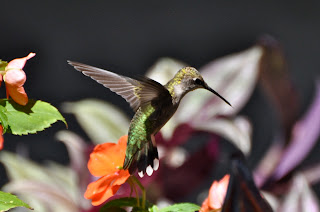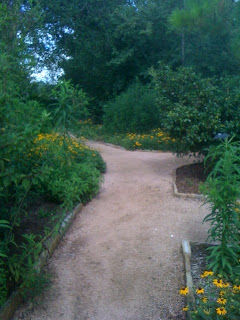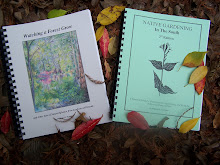Grasshopper Sparrow
(photo by Dave Patton)
“What is the price of five sparrows? A couple of pennies? Not much more than that. Yet God does not forget a single one of them.”
-- Jesus Christ
When most non-birders hear the word “sparrow” they think only of the “House Sparrow” – that common little bird of America's cities, suburbs, and farms. But the House Sparrow is not even a sparrow. It's a finch (yes Virginia, there is a difference...). And an introduced Old World Finch at that.
Here in the New World, we have over 150 native species of true sparrows, 50 of which live in the U.S. and Canada. Only six of these breed/nest in the relatively small and watery state of Louisiana. But come winter, these six are joined by 17 additional migratory species. And if you add in the rarer non-regularly-occurring species that have been recorded in Louisiana, the total tops out at 33 species – well over half of the total species native to North America (north of Mexico)! In all of the U.S., this degree of sparrow diversity is surpassed only by Texas, California, and perhaps Arizona.
Savannah Sparrow -- Acadia Parish
(Photo by Matt Conn)
In general, sparrows are small, shy, wary birds, more often than not secreting themselves within dense grassy fields and brushlands; that's why so few non-birding humans are even aware of their presence. But once you get to know them – and that takes a lot of time, patience, and ideally, a good spotting scope – you too will be blown-away by the exquisite intricacy of their color patterns, and the sweetness of their lifestyles. Sparrows are indeed wondrous things to behold – easily as wondrous as a fine collection of gemstones – actually, more so in most cases.
White-crowned Sparrow -- a favorite of all Sparrow Freaks
(photo by Russ Norwood www.perceptivist.com)
Because they are so small in size and retiring in habit, sparrows give fits to those of us who are learning to identify them down to species. Newbie-to-intermediate birders often simply throw up their hands, and refer to them collectively as “LBJs” – Little Brown Jobs.” For birders and erstwhile birders alike wishing to marvel/study the sparrows, here are a few tips:
First, get yourself a spotting scope. When you're trying to learn the sparrows, in most real-life situations binoculars are too shaky, too clumsy, and limited in magnification to adequately see the fine, delicate, and detailed – almost like studying a mosaic – color patterns inherent to each species. That's where a 20-30X spotting scope comes in. Mount that sucker on a lightweight but good-quality tripod and you're ready to rock. You'll be surprised at how easy it actually is to manipulate and learn to use such a rig. And remember the fact that you're generally not going to be slithering through the woods 'n twigs n' branches n' vines with it (sparrows don't live in such places) but more often than not standing (or better, comfortably seated on a portable field seat rig or on the tailgate of your vehicle) at the edge of a forest or field or brushland.
Leconte's Sparrow -- Jeff Davis Parish
(photo by Dave Patton)
Next thing you should know is, the early bird gets the sparrow. You've got to get out there at the crack of dawn to optimize your chances to study sparrows with any degree of leisure. With the rising of the sun, they all jump up to the tops of grasses, shrubs, fenceposts, utility lines, etc. and sit there for minutes at a time, casually preening and allowing the sun to dry the dew off of their wings. With the angle of the rising sun to your back, you'll snag some fantastic “studys.” For photographers, dawn/early morning sessions such as this are a must – not an option.
Seaside Sparrow...occurs only in salt-marsh habitats;
this one from just north of the Gulf shore at Sabine Pass on the TX-LA border
(photo by Matt Conn)
A fool-proof modification of the above scenario would be to approach your friend/family member who lives on a farm and/or owns a big expanse of brushy/weedy land – maybe YOU already live in such a place – and in an open area adjacent to the grass/brush where you see a bunch of sparrows hanging out, place a series of seed-feeding stations in a row (spaced every 25' over 150' is optimum). You don't have to get elaborate. A simple board or piece of plywood on a cinder block will suffice. Buy 50lb sacks of the cheapest “wild bird seed” you can find. Faithfully refill the seed stations when they're empty. You'll be in sparrow-studying heaven from November through March. That's five months, kids! Oh and keep this rig portable as possible, for if you “strike out” in one place, search out a better place. In these parts, it won't take long to “hit it.”
White-throated Sparrow, our most common/ubiquitous winter species
(photo by Russ Norwood www.perceptivist.com)
Obviously, you'll need a good field guide. Try National Geographic or Sibley's guides to the birds of North America. Don't get an “eastern” or “western” version, for both eastern and western sparrows hang out in Louisiana. We're lucky that way.
Nelson's Sparrow
Very Site-specific species in cattail marshes in coastal parishes
but this one was caught red-handed in fall migration in northern Louisiana
(photo by Jeff Trahan)
Lastly, for those of you who enjoy traveling out in the field, work on creating a solid “search image” series of the specific habitat types which sparrows frequent most. Certain sparrows are very site-specific. White-crowned Sparrows want dense shrub thickets. Clay-colored and Grasshopper sparrows like “spaced brushlands” where big shrubs and small trees are dotted rather than tightly-bunched within a grassy field. Henslow's and Bachman's sparrows are all about long-leaf pine savannahs – grasslands dotted with long-leaf and other pines along with the occasional shrub thicket. Other sparrows such as White-throated and Song occupy all manner of brushy and forested (especially forest-edge) situations, up to and including densely-landscaped urban backyards.
Henslow's Sparrow -- Rapides Parish
(photo by Dave Patton)
Over time, you'll learn which sparrows to expect in which types of landscapes. Then the fun begins. And the cool cultural thing about this sport are your sparrowing-surroundings: Hanging out in tiny, convenient parking spots along quiet, gravel farm roads. The occasional friendly conversation with the local farmer (after you explain that you're not some terrorist spying on his house). Farmers are, like Donald Sutherland once proclaimed, “the finest kind.” All the while, ducks, geese, blackbirds, wading birds, and who knows what all else are all flying and hollering overhead. Hawks are on every telephone pole. Country stores are selling boudin and beverages and giving away awesome conversations for free.
Swamp Sparrows -- Iberia Parish
(photo by Matt Conn)
Have I convinced you?
I mean, think about it. What do you have to lose? Main thing is you'll be out in Nature; where the Big God lives.
Sparrow Freaks, unite!




















































